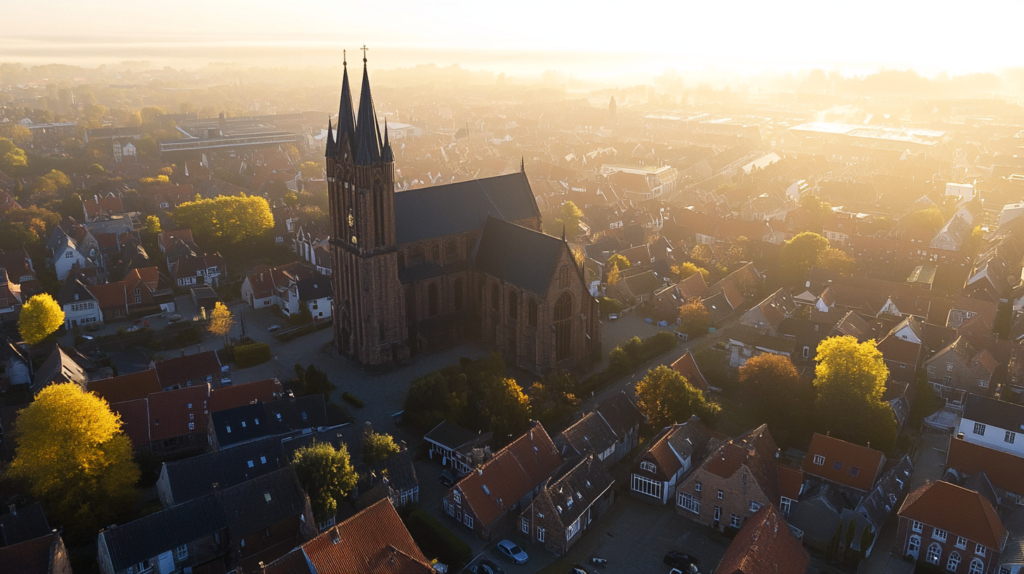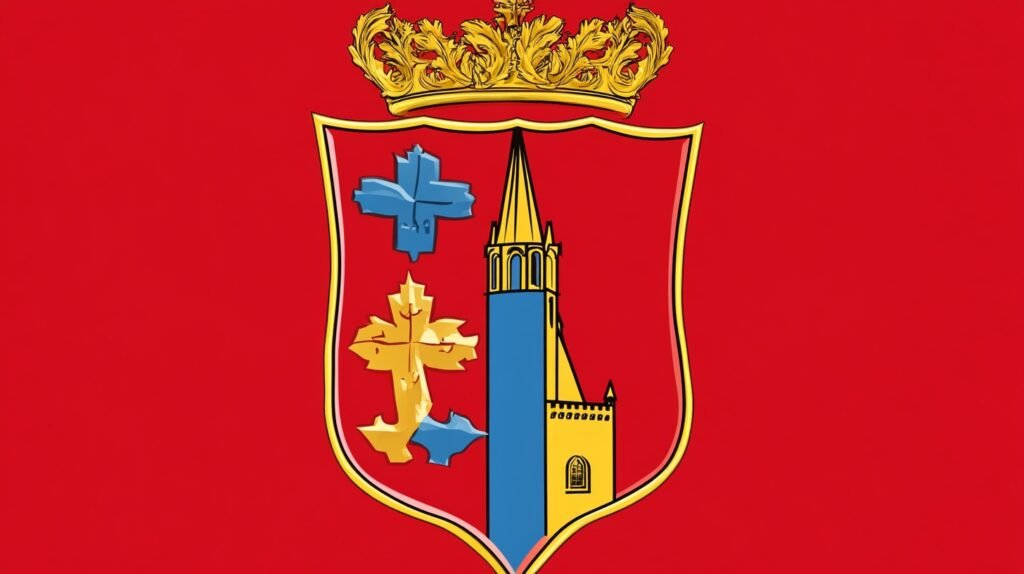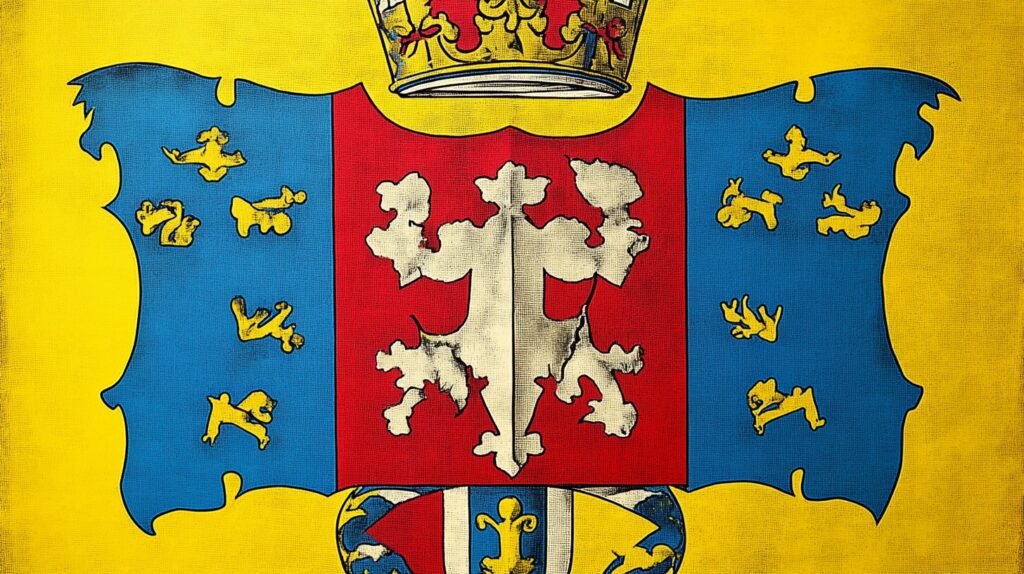
Haderslev: A City of History, Learning, and Strength
Haderslev, a charming city in Southern Jutland, Denmark, is a place where history, education, and military heritage converge. In the early 20th century, Haderslev was a vibrant community that had recently rejoined Denmark following the Schleswig Plebiscite of 1920. This historic event marked a new chapter for the city, as it embraced its Danish identity while preserving its rich cultural and architectural legacy.
The Heart of Faith: Haderslev Cathedral
Dominating the city’s skyline is the majestic Haderslev Cathedral (Haderslev Domkirke), a stunning example of Gothic architecture. Built in the 13th century, the cathedral is one of the oldest and most significant landmarks in the region. Its towering spire, intricate brickwork, and serene interior have made it a spiritual and cultural focal point for centuries. The cathedral’s history is intertwined with the city’s own, having witnessed the Reformation, wars, and the shifting borders between Denmark and Germany. In 1920, it stood as a symbol of resilience and faith, serving as a gathering place for the community during both celebrations and times of reflection.
A Beacon of Learning: Statsskolen
Education has long been a cornerstone of Haderslev’s identity, and the Statsskolen (State School) is a testament to this tradition. Established in the late 19th century, Statsskolen was one of the leading educational institutions in the region, offering a rigorous curriculum that prepared students for higher education and professional careers. The school’s grand neoclassical building, with its imposing facade and spacious classrooms, reflected the importance placed on knowledge and intellectual growth. In 1920, Statsskolen played a key role in fostering a sense of Danish identity among the youth, particularly after the reunification of Southern Jutland with Denmark.
Military Heritage: Haderslev’s Barracks and Training Grounds
Haderslev’s military facilities have been an integral part of the city’s history since the 18th century. The Haderslev Barracks (Haderslev Kaserne), established in the late 1700s, served as a training ground for Danish soldiers and played a crucial role in defending the region. By 1920, the barracks had become a symbol of national pride, especially following the reunification with Denmark. The presence of the military brought a sense of security and vitality to the city, with soldiers often participating in local events and ceremonies. The nearby training grounds, with their open fields and strategic location, were a reminder of Haderslev’s historical importance as a border city.
The Historical City Center: A Walk Through Time
Haderslev’s historical city center is a treasure trove of cobblestone streets, half-timbered houses, and charming squares. The Town Square (Torvet) has been the heart of the city for centuries, bustling with markets, festivals, and public gatherings. Surrounding the square are beautifully preserved buildings that reflect the city’s architectural evolution, from medieval times to the 19th century. The Old Town Hall, with its elegant Renaissance-style facade, stands as a reminder of Haderslev’s administrative and civic history.
One of the most picturesque areas is the Haderslev Dam, a serene lake that borders the city center. The dam, with its tranquil waters and tree-lined paths, has been a beloved spot for leisurely walks and outdoor activities since the 19th century. In 1920, it offered residents a peaceful escape from the bustling city life, while also serving as a gathering place for community events.
A City Reunited
The year 1920 was a pivotal moment for Haderslev, as the Schleswig Plebiscite solidified its place within Denmark. The city’s Danish majority celebrated the reunification with great enthusiasm, and the cathedral, Statsskolen, and military facilities all played a role in fostering a renewed sense of national identity. Yet, Haderslev’s German heritage remained an integral part of its cultural fabric, creating a unique blend of traditions that defined the city.

An imaginative coat of arms for the city of Haderslev.

An imaginative coat of arms for the entire region of Sønderjylland encompassing Aabanraa Amt, Tønder Amt, Sønderborg Amt, Haderslev Amt.
Top 3 – Haderslev Amt
- Christiansfeld
This UNESCO World Heritage town is a standout. Founded in 1773 by the Moravian Brethren, it’s a perfectly planned settlement with symmetrical streets and honey-colored brick buildings that feel like a step back in time. The Moravian Church itself is starkly simple—no frills, just white walls and wooden benches—but it’s oddly captivating. The town’s famous for its honey cakes too, baked in traditional recipes you can taste at local spots like Brødremenighedens Hotel. It’s a quiet, poetic place that blends Danish and German influences, thanks to its borderland past. - Haderslev Cathedral (Haderslev Domkirke)
In the heart of Haderslev town, this Gothic cathedral looms large with its red-brick towers. Built in stages from the 13th century, it’s been a witness to the region’s shifting fortunes—once Catholic, it became Denmark’s first Protestant cathedral in the 1520s. The interior’s got a striking mix: a 14th-century crucifix, vivid frescoes, and an organ from 1652 that still sings. Climb the tower if you can—the view over the fjord and old town is a stunner. It’s a historical anchor that ties the area’s story together. - Dyrehaven ved Haderslev
Just west of Haderslev, this deer park is a slice of nature that feels wild yet accessible. Spanning forests and meadows along the Haderslev Fjord, it’s home to red deer you can spot grazing if you’re patient. The trails wind past lakes and old manor grounds, offering a calm escape with a backdrop of water and woods. It’s not as vast as Thy National Park up north, but its proximity to town and the fjord’s quiet beauty make it a local treasure worth a stroll.